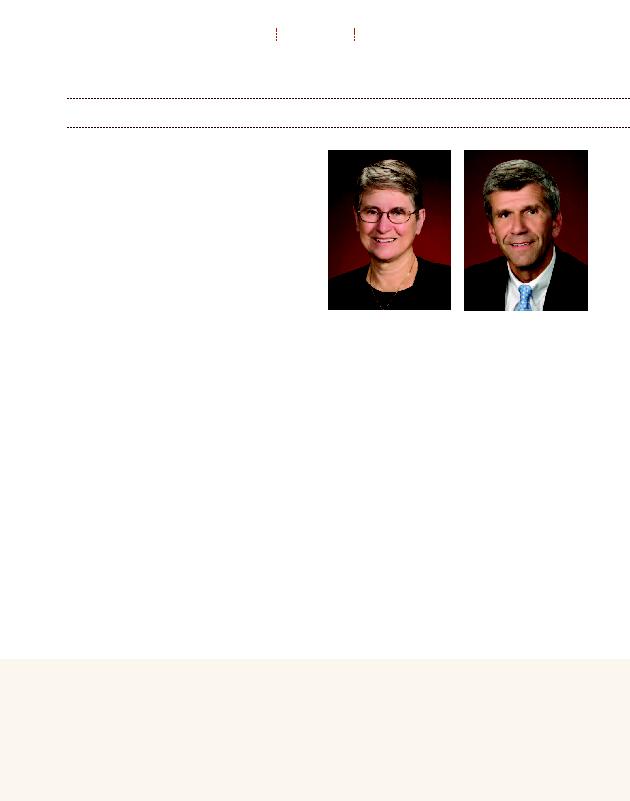
B
O
N
A
V
E
N
T
U
R
E
4
SUMMER 2015
Robert J. Daugherty, '77
Board Chair
Daniel F. Collins, '73
Board Vice Chair
Kathleen A. Colucci, '77
Board Vice Chair
Laurie A. Branch, '04
Board Secretary
St. Bonaventure University Board of Trustees
Lana D. Benatovich
Janet I. Bodnar, '71
James E. Canty, '84
Sr. Margaret Carney, O.S.F.
Scott P. Cielewich, '72
Fr. Thomas E. Conway, O.F.M.
Joseph A. DeMaria, Esq., '79
Colette C. Dow, '88
Timothy J. Finan
Thomas M. Garvey, '74
Michael E. Hill, '96
Albert C. Horton, '66
Bharat Kohli
William J. Lawley Jr., '85
Cindy Abbott Letro
Paul C. McDonald, '80
Kristan K. McMahon, Esq., '97
James E. Meyer, '76
Yvonne Minor-Ragan
Very Rev. Kevin Mullen, O.F.M.
Les Palm
Fr. Kenneth P. Paulli, O.F.M.
Very Rev. John Puodziunas, O.F.M.
Bill Purcell
James E. Stitt
Marvin W. Stocker, '65
Lynda M. Wilhelm, '86
We need you.
We could tip-toe around the sentiment. Maybe you'd
read between the lines and come to that conclusion by the
time you reached the end of this, but the scores of remark-
able journalists this University has produced would all be
shaking their heads and wondering:
"Why did they bury the lead?"
The bottom line needs to be the top line: We need you --
now more than ever.
The higher education industry in the United States is experi-
encing a shift in public perception, character, size and orien-
tation that mirrors the shift in health care that has been
unfolding for the past two decades.
Rising costs, the explosion of online education, the advent
of Massive Open Online Courses (MOOCs, in the vernacular)
and the growth of a for-profit sector that challenges the core
of the traditional industry model continue to occupy the na-
tion's headlines.
Those are just the tremors within the higher education in-
dustry. Seismic shifts externally have only exacerbated the
problem.
The economic collapse of 2008, an unrivaled student debt
bubble, and a challenging job market for young college
graduates has families more acutely focused on outcomes
and scrutinizing every penny they spend more closely than
ever. Add in the staggering population decline in the North-
east -- the U.S. region more saturated with colleges than
any other -- and you have the makings of a revolution.
The revolution has impacted every sector of higher educa-
tion, but among the most vulnerable are small, private, inde-
pendent institutions with modest endowments.
St. Bonaventure checks each one of those boxes. We are
not the most vulnerable, but St. Bonaventure stands in 2015
at a critical juncture, facing significant decisions and opportu-
nities.
The good news? The revolution has not come as a surprise
to St. Bonaventure's Board of Trustees and administration.
The University created a strategic plan in 2009 that estab-
lished goals and areas of strategic focus aimed at driving rev-
Campus News
An open letter to St. Bonaventure University alumni
Sr. Margaret Carney, O.S.F.
Robert Daugherty
enue through enrollment growth, fundraising, and the develop-
ment of alternative revenue streams.
While we achieved many goals outlined in the plan, others have
fallen short, particularly those related to enrollment growth. We
are not alone. The vast majority of schools in the Northeast that
share our characteristics face the same challenge.
The Board of Trustees recognized this more than a year ago,
and began to re-evaluate St. Bonaventure's trajectory in the face
of the industry-wide challenges and the microcosm of those chal-
lenges in rural Western New York.
This caused our Board to zero in on revenue generators and
brand drivers.
While many members of the campus community were spending
months preparing an accreditation report that would result in one
of the most positive reviews from the Middle States Commission
on Higher Education in the University's history, an ad hoc commit-
tee of the Board was answering a question that's been an ele-
phant in the room for years, but never thoroughly examined:
Does it make sense for a school the size of
St. Bonaventure to compete athletically at the
Division I level?
Every business, whether it makes widgets or educates young
adults, has an obligation to determine if segments of their opera-
Trustees Emeriti
Raymond C. Dee, '64
Robert R. Jones, D.C.S., '58
John R. "Jack" McGinley, Esq., L.H.D., '65
Charles Osgood, L.H.D.
Leslie C. Quick III, L.H.D., '75
